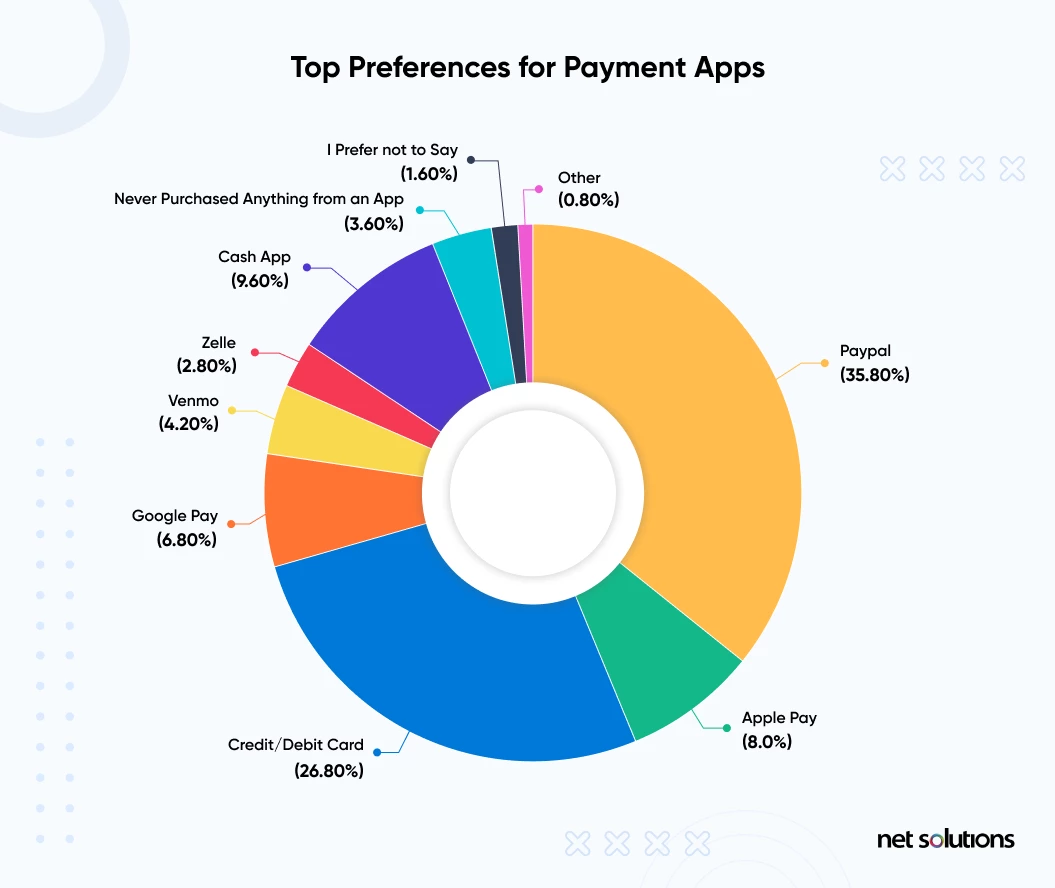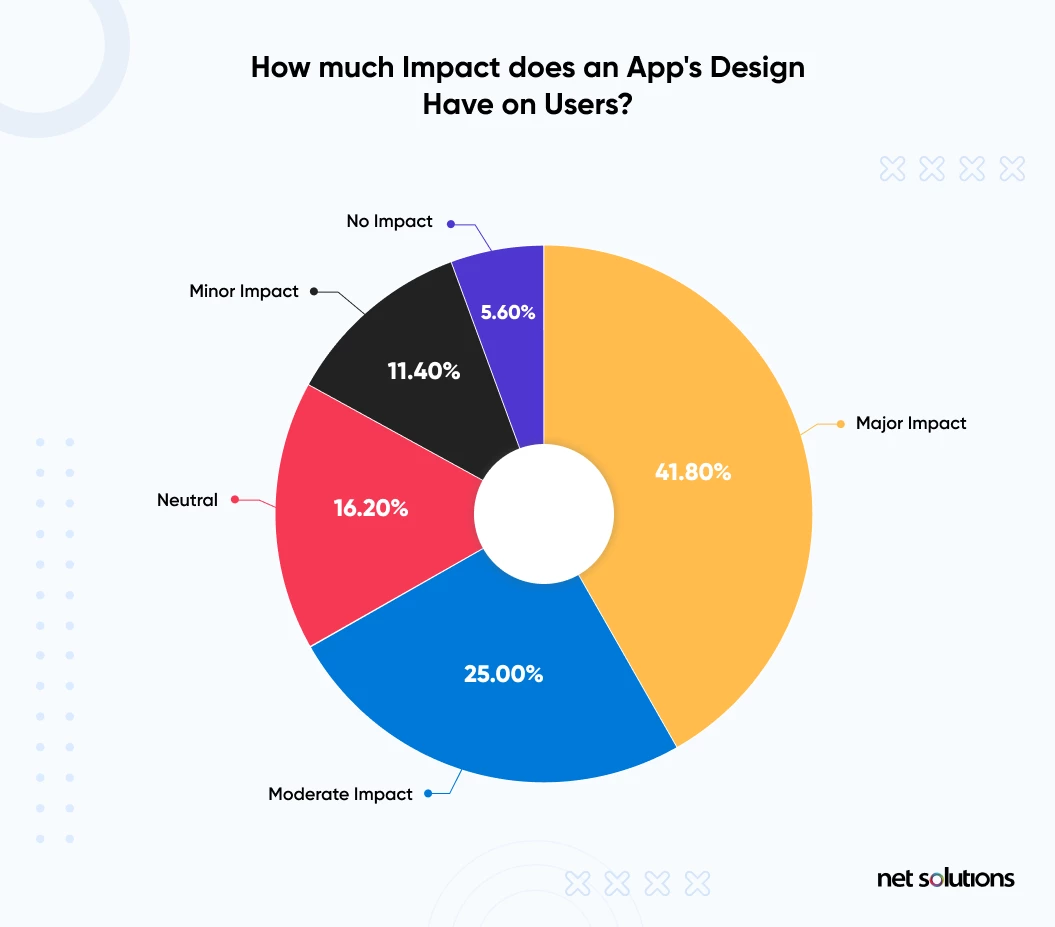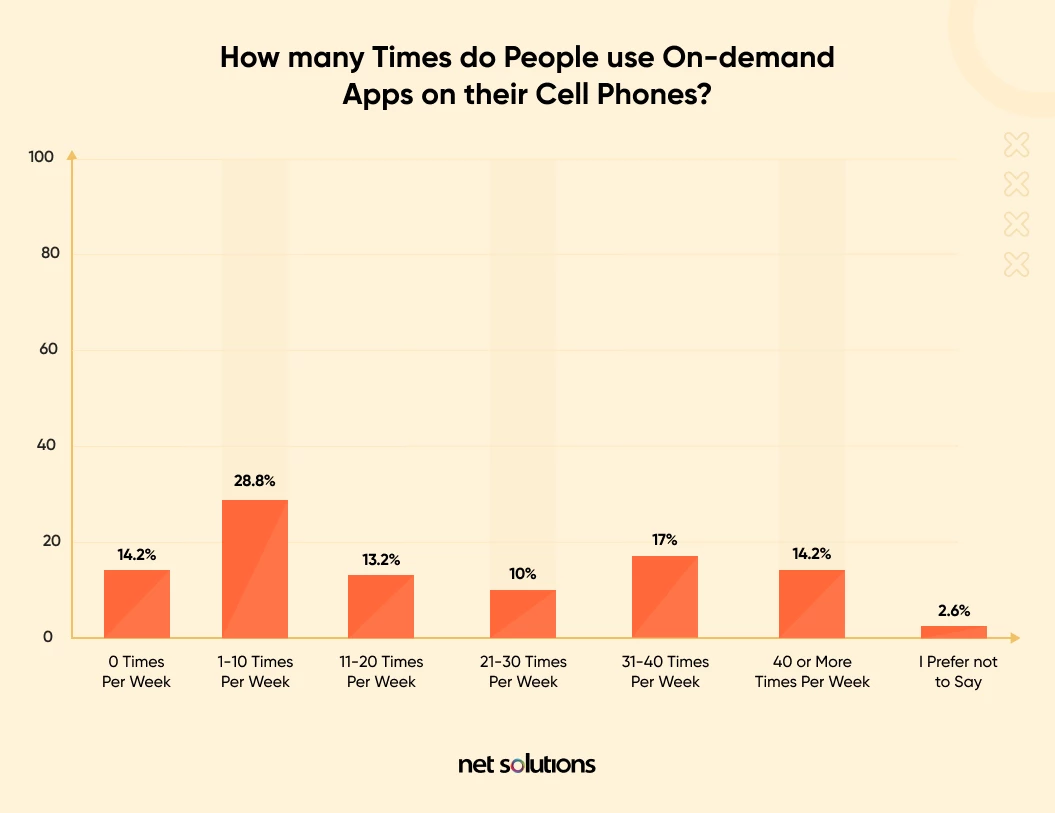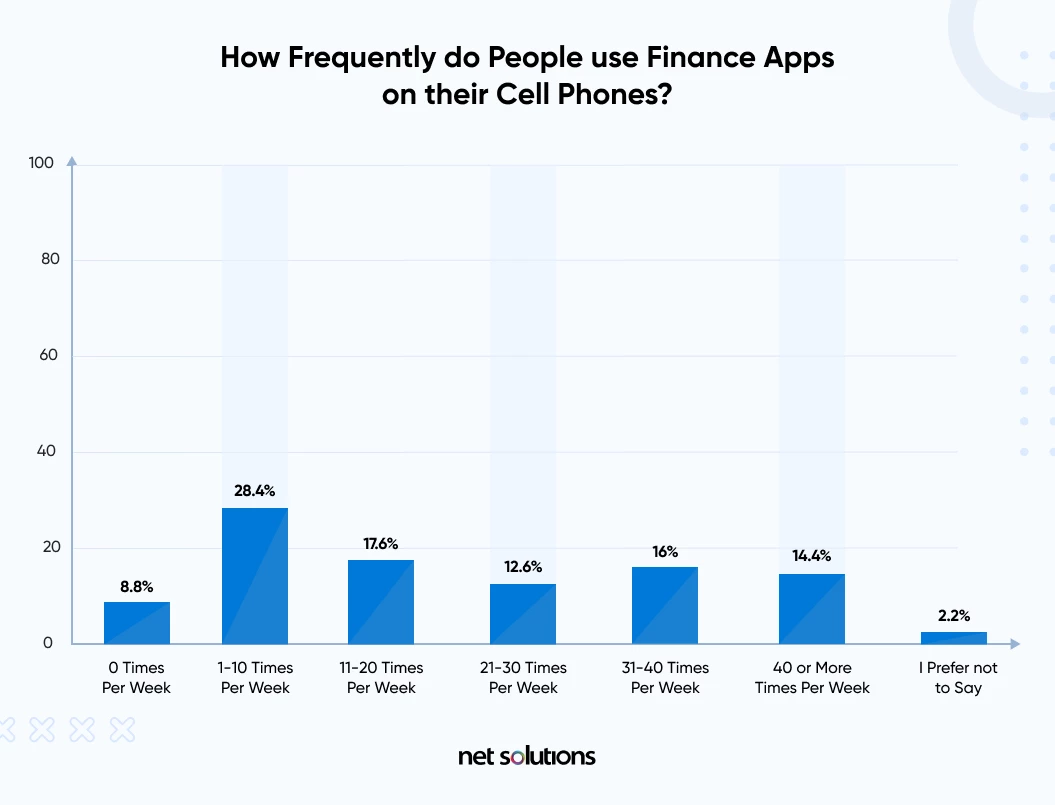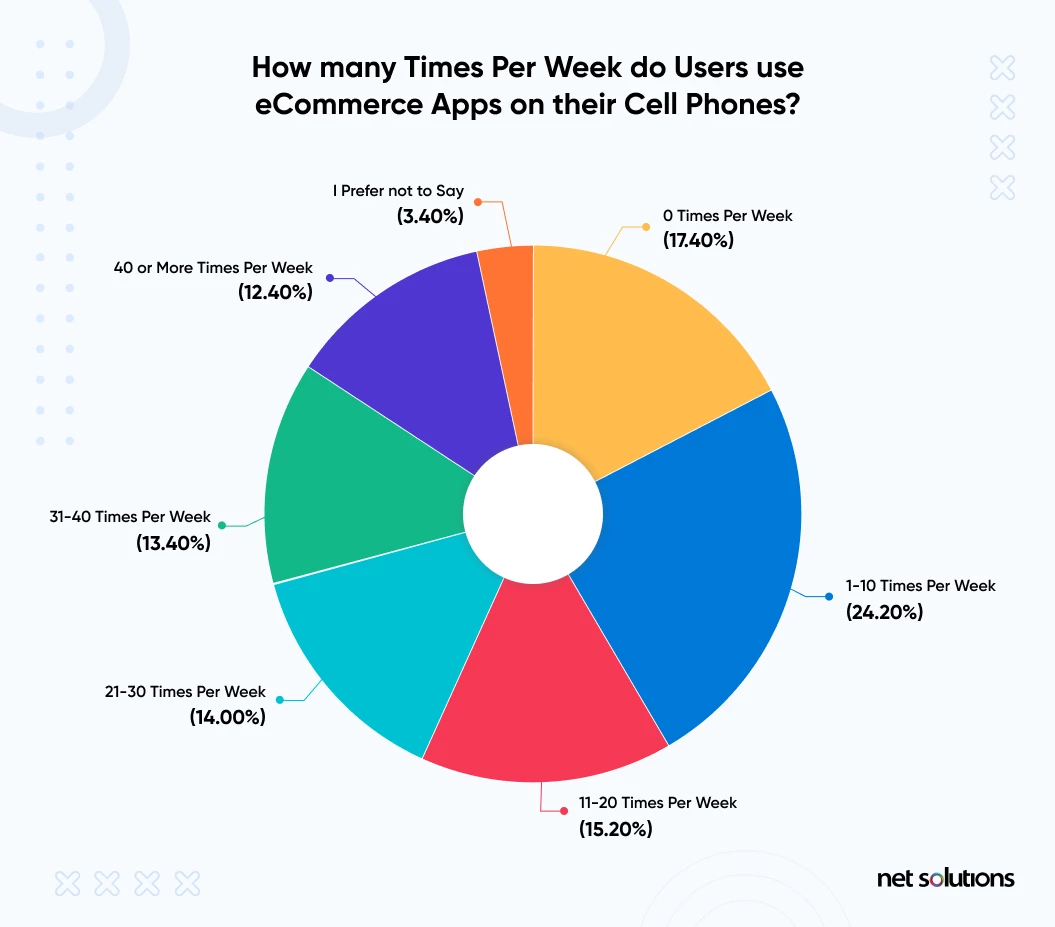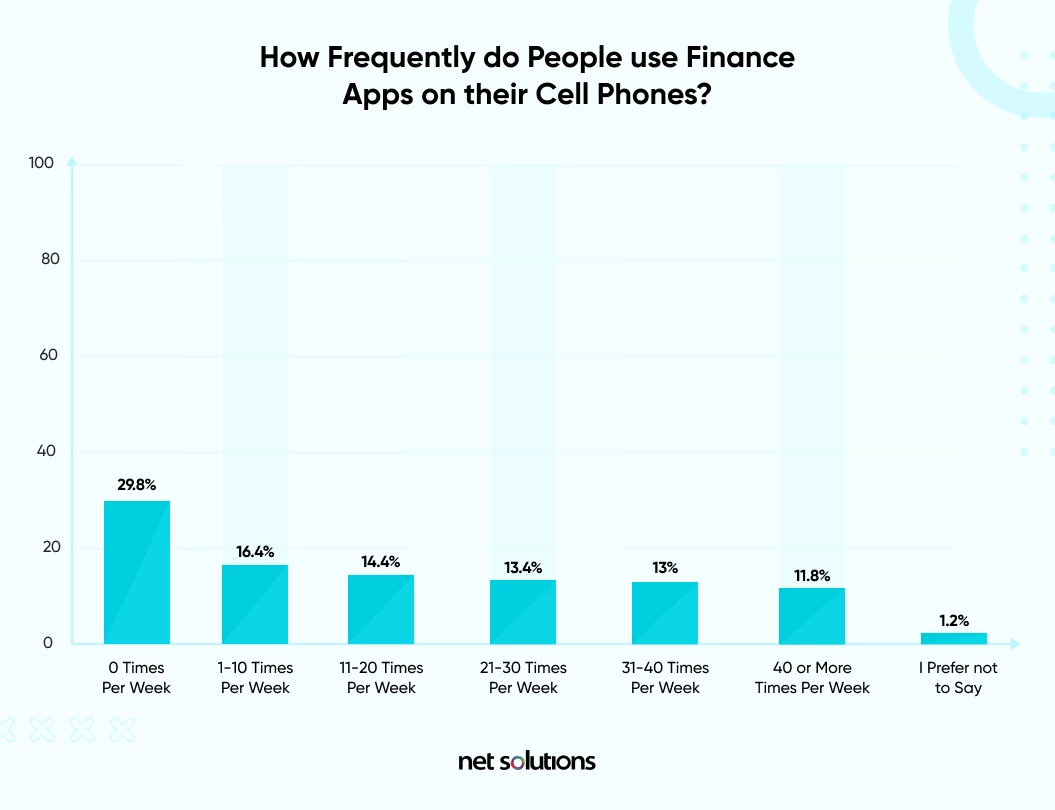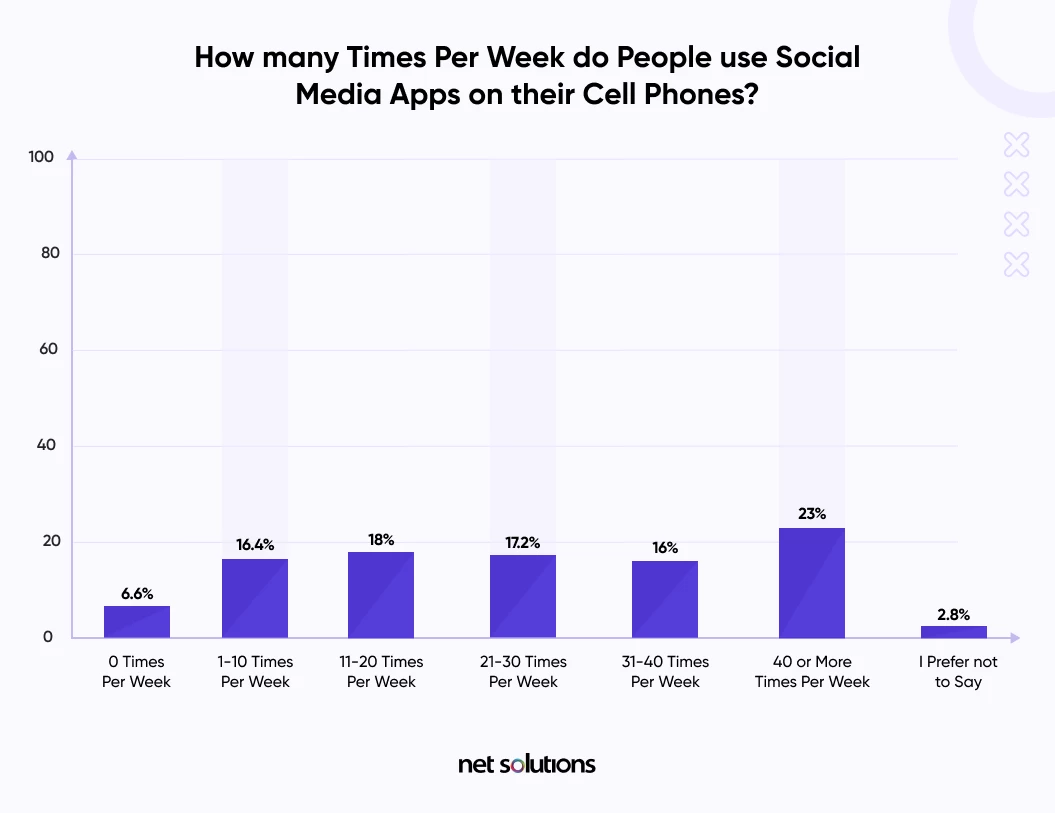What do your users want in a mobile app? We wanted to find out too, so we surveyed 500 people to understand what it takes to make an app that users love and want to use. Here’s what we found.
What Do People Use Cell Phones For?
We started by asking what features people turn to most on their cell phones — just to determine where mobile apps stood in the pocket tech hierarchy. Turns out apps take the top podium, with more users saying they use their cell phone for apps than for audio calls, text messages, or emails.
Here are the top reasons, in order, that people turn to their mobile phones:
- Mobile apps
- Texting
- Audio calls
- Video calls
- Voice memos
Some General Information About Daily App Usage
What mobile app features users want in a finance app aren’t the same thing they want in a dating app — with obvious crossover exceptions like security. We asked a few general questions in our survey, but most were relevant to specific categories of apps:
- On-demand delivery apps
- Finance apps
- E-commerce apps
- Dating apps
- Social media apps
Before digging into what people want with each of those app types, let’s look at two important overall topics: payment options and app design.
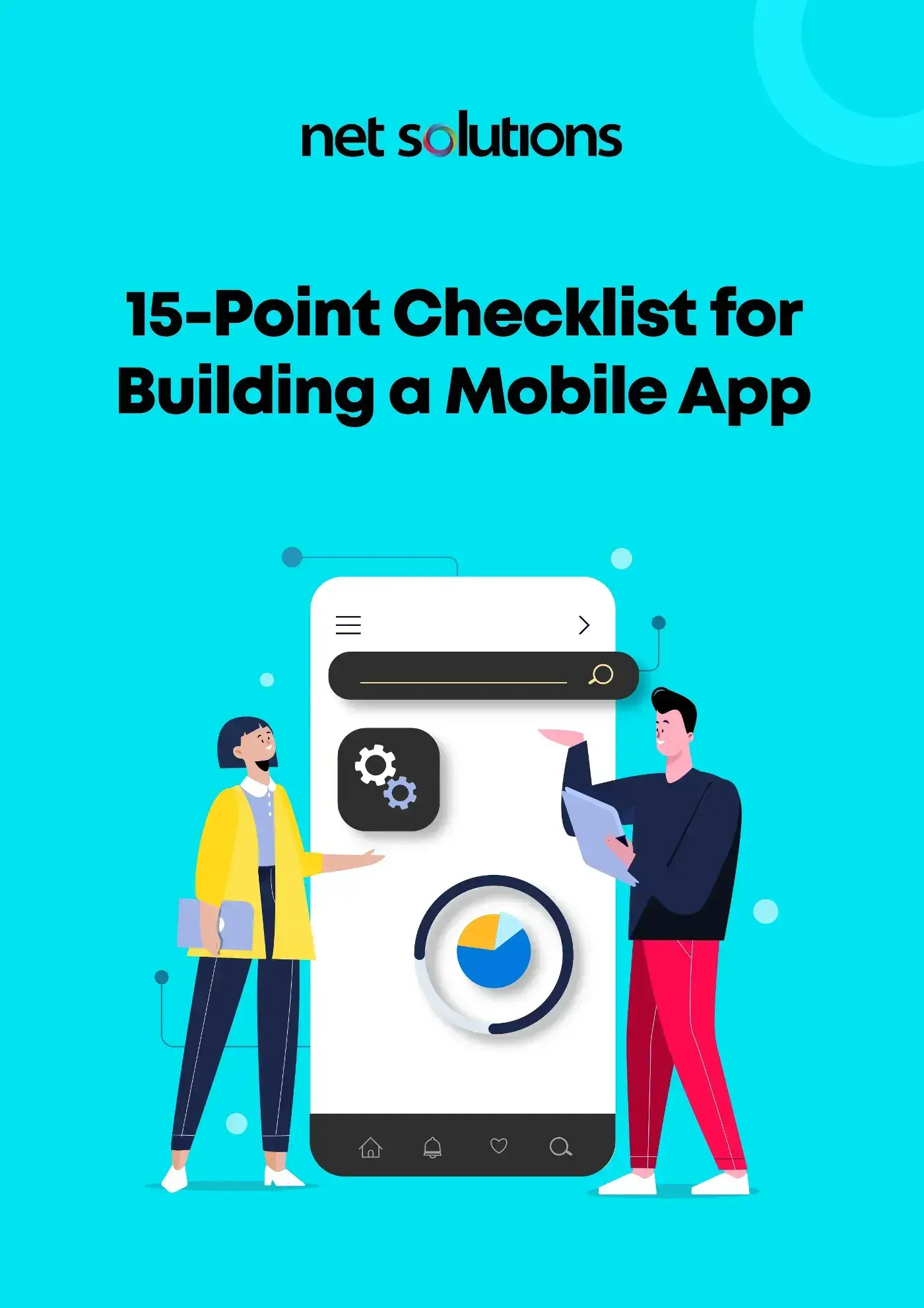
We respect your privacy. Your information is safe.
PayPal and Credit/Debit Cards Are Top Payment Preferences
PayPal is the clear winner, with more than a third of respondents preferring this payment method. That makes sense: PayPal is popular, common, and fairly secure. It’s also easy to use in a mobile app without entering anything other than a password (if anything at all needs to be entered).
Credit and debit cards are next, with a fourth of respondents choosing them as preferred payment methods. The rest of the list is filled with a variety of mobile and online payment methods. Here’s a look at the data for the top seven payment preferences.
Takeaway: If you’re selling items in your app, you’ll need to accept PayPal and credit cards at least to connect with large audiences. But preferences vary by audience, and more payment methods are better than fewer.
Yes, Users Care About Design
Should you rush an app out to get something in consumers’ hands or spend time on the details of the design? Most people appreciate the attention to detail, with 41.8% of respondents saying design has a major impact on whether they use an app.
Another 25% say it has a moderate impact, and only 5% say it doesn’t matter.
Takeaway: Design matters, so pay attention to how visually appealing your app is and whether all your elements — including buttons and menus — work seamlessly.
Key Characteristics of User-Friendly On-Demand Delivery Apps
For the purposes of our survey, we defined on-demand delivery apps as options like DoorDash, Instacart, Postmates, and Seamless.
What brings people back to on-demand delivery apps or makes them choose to use the app on their cell phone over options on another device? We posed questions about on-demand delivery app use and preferences, and here’s what we found out.
People Use On-Demand Delivery Apps More Than You Think
Close to 15% of respondents said they access on-demand delivery apps on their cell phones more than 40 times a week!
And while another 14.2% said they don’t use these types of apps at all, around 42% said they used them 1 to 20 times a week.
Convenience, Loyalty, and Savings Features Are Big Draws
We presented 20 common features of on-demand delivery apps and asked users to check all that were important factors in whether they would use a specific app. Here are the top 10:
- Delivery tracking
- Loyalty rewards
- Ability to call or text with a delivery person
- Discounts and deals
- Pickup options
- Multiple payment options
- Reorder features
- Store reviews and ratings
- Search bar
- In-app chat for communicating with delivery person
Takeaway: Communication, convenience and flexibility are important. On-demand delivery app users also want to build a relationship with brands and reap the rewards of loyalty with savings.
People Don’t Necessarily Want Push Notifications
When asked what mobile app features are least important, push notifications are the winner. People don’t necessarily want their phone chiming every time there’s an update with a food or grocery order. If you build push notifications into your app, ensure users have options for managing them and even turning them off.
Other mobile app features ranked as least important include:
- Social features
- Monthly subscriptions to reduce fees or charges
- Ability to save favorite store features
Bad Experiences Drive People Away From On-Demand Delivery Apps
More than 60% of respondents said they stopped using an on-demand delivery app because of a bad experience.
The top offender? Missing or incorrect items delivered.
Other issues that can drive away customers include:
- Poor reviews and ratings
- Monthly subscription charges
- Inaccurate delivery times
- Deliveries never showing up
- Communication issues in the app
Takeaway: On-demand delivery apps don’t exist in a vacuum. Carefully consider how the app will interact with and drive the actual delivery process and whether it will be a good experience overall for the customers.
Key Characteristics of User-Friendly Finance Apps
Not surprisingly, people log into their finance apps a lot too:
Ability to See Financial Information and Security Are Most Desired Features
People want their financial apps to provide easy, convenient access to information about accounts. They also want the ability to manage those accounts. At the same time, savvy users are concerned with security and look for apps that allow biometrics for logging in.
We asked survey respondents to select all mobile app features that were important to them from a selection of 12 commonly found in financial apps. The top six were:
- Ability to check balances
- Ability to send money
- Face/fingerprint login
- Automations (such as for payments and deposits)
- Credit trackers and calculators
- Budgeting tools
We also asked what mobile app features were the least favorite or didn’t matter as much to users when selecting or engaging with a financial app. Top responses included:
- Push notifications
- Social features (such as sharing to social media or the ability to follow people from within a financial app)
- Dark/night mode options
Takeaway: Financial apps are about functionality. Make sure features that let people view or track financial data — as well as those that support interactivity with one’s accounts — work well before you spend time on details like social interactions or optional viewing modes.
Around Half of the People Said They Stopped Using a Financial App Because of a Poor Experience
Unsurprisingly, the top offenders that caused people to drop a financial app were security and problems sending money. If you build a financial app, people must feel safe using it, and they should still be in charge of (and feel in charge of) their own money.
Other reasons people stopped using financial apps in the past include:
- Too many, irrelevant or annoying in-app offers
- Annoying push notifications
- Automated features that didn’t work as desired
Takeaway: Every design choice for your app must be customer-centric. Design teams should think about what people want to do and how to give a good user experience.
Key Characteristics of User-Friendly E-Commerce Apps
Around 17% of people don’t use e-commerce apps on at least a weekly basis, but those that do tend to log in multiple times a week or even a day:
E-commerce App Users Want Convenience
We presented users with 16 features of common to e-commerce apps and asked which were their favorite or helped them choose to engage with specific apps.
Of the top six responses, five were centered on convenience:
- Shipping tracking
- Multiple payment options
- Easy registration processes
- User-friendly product filtering and sorting
- Face/fingerprint login
Consumers also ranked loyalty programs as the top app features for e-commerce apps, likely due to a desire for savings and rewards.
When asked what eCommerce app features are their least favorite or don’t impact engagement with or use of an app as much, users identified push notifications, social sharing functions, and dark/night mode.
More Than Half of Respondents Stopped Using an E-Commerce App Due to Negative Experiences
Around 53% of people said a negative experience or poor functionality would cause them to stop using or delete an e-commerce app.
Here’s a look at some of the common reasons people stopped using these types of apps:
- Too many, irrelevant or annoying push notifications
- A long, complex or annoying registration process
- Loyalty programs that didn’t serve their needs
- Lack of desired payment options
- Poor product ratings and customer reviews
- Lack of or inaccurate shipment tracking
Convenience Features, Personalized Deals, and Information Push People to Make Purchases
We asked what features would make it more likely someone would complete a purchase in an e-commerce app. The top responses read almost like the opposite of the list of what drives people away from these apps:
- An easy registration process
- Loyalty programs that provide value
- Plenty of payment options
- Accurate shipment tracking
- User-friendly options for sorting and searching for products
Takeaway: Take time to map the process that someone goes through from arriving in your app to making a purchase. Think about how you can cut out steps without bringing down quality or impacting security. People are looking for the fastest, easiest buying experience that also helps them purchase with confidence.
Key Characteristics of User-Friendly Dating Apps
Close to 30% of respondents didn’t use dating apps, which isn’t surprising. When compared to all of the options discussed so far, dating apps are a more niche product.
But the people who use these apps access them many times a week:
People Want Dating Apps With Lots of Information Options
The biggest feature people want in a dating app is the ability to see who liked their profile. Other popular features include:
- Chat functions
- Easy sign-up processes
- Advanced filtering options
- Ability to customize a profile
- Ability to boost a profile
Interestingly, while push notifications didn’t score in the top five, it also wasn’t one of the lowest-ranked features — as it was for some other types of apps. People who are looking for a hookup or future significant other are interested in knowing about possibilities as soon as possible.
When it comes to least favorite features, top offenders include:
- Having to pay for premium features
- No way to stop from seeing profiles after deciding against them or inability to undo and see profiles again if someone swiped past a bit too fast
- Dark/night mode
Takeaway: People use dating apps to meet people, and they’re looking for technology that helps rather than hinders. Look for creative ways to offer functionality that lets people personalize their profiles and connect with like-minded users.
People Will Leave Dating Apps if They Aren’t Happy With the Experience
More than 62% of respondents who use dating apps said they left one after a poor user experience. The top reason for doing so was a bad date (or multiple bad dates). While that’s not necessarily a fault of the app design, it does point to a need to pay attention to how the app matches people.
Other reasons for ditching the dating app included:
- Having to pay for features
- A lack of success meeting people
- Inability to boost profile or get seen by others
Takeaway: Dating app users don’t want to pony up to pay for premium features. Consider monetizing apps in other ways to maximize how many people use and are happy with your product.
Key Characteristics of User-Friendly Social Media Apps
Only 6% of people said they don’t use these types of apps weekly, and most people use them daily or more:
Social Media App Users Are Most Worried About Communication and Sharing Features
When people get on social media apps, they’re looking to be social — which means mobile app features like the ability to post, share, tag and comment are all important.
We asked social media app users what their favorite features were, and the top seven were:
- Ability to share photos and videos
- Direct messaging feature
- Ability to comment on posts
- Options for resharing or reposting
- Direct messaging
- Options for tagging others in posts
- News pages and updates
When asked what their least favorite part of social media apps was, around 44% of users said sponsored ads and posts. Push notifications came in second, with around 32% of respondents calling them out as an undesired element of social media apps.
Takeaway: When developing social media apps, concentrate on secure, convenient communications. People want to engage with others through a few taps or swipes, and they don’t want to jump through numerous hoops or screens to achieve results.
Most People Use Social Media Apps to Keep Up With Friends and Fill Time
We asked people to select the main reasons they used social media apps. Here are the responses, in order of popularity:
- Keeping up with friends and family
- Filling time when bored or not busy
- Sharing personal updates
- Engaging in general networking
- Consuming content
- Sharing personal opinions
- Keeping up with groups of friends already on the platform
- Watching/interacting with live streams
- Conducting research
- Staying up-to-date on news and current events
- Meeting new people
- Following influencers (artists, musicians, etc.)
- Sharing creative projects
- Following celebrities
Takeaway: Social media apps aren’t just about communication. For many users, they’re equally about entertainment. Create opportunities that engage users with dynamic content such as video.
Social Media Users Are Least Likely to Leave an App After a Poor Experience
Less than half of respondents in our survey said they’d quit a social media app because of a poor experience. For those who did, a data leak was the biggest reason.
Other reasons people gave for leaving a social app included being bullied or harassed or becoming depressed.
Takeaway: Ensure you have a process for users to self-police their social media contacts by blocking users or deleting comments or connections.
Dark/Night Mode Is Important to Social Media App Users
For most of the other types of apps in this report, the dark mode was identified as one of the least important mobile app features. But social media users are highly likely to use it: More than a third always use night mode if it’s an option and another 22% use it often. Consider bumping “night mode” to the top of your design priority list if you’re working on this type of app.
Frequently Asked Questions
1. How to prioritize app feature development?
While prioritizing the mobile app features, you must keep in mind the end goal, i.e, achieving the product-market fit. Hence, always select the app features that are both what users desire and the market demands. Here are a couple of other things you should keep in mind:
- Know the difference between what users want and need.
- Always go for features that offer value to a large audience.
- Analyze your competitors and try to fill the gap their app fails to fill.
- Identify user problems and see how your app can solve them.
2. How to build a product roadmap for your app idea?
Following are the steps you must follow to build a product roadmap on your app idea:
- Understand the product vision through interviews, surveys, and brainstorming sessions.
- Decide on your product’s strategy in which you will decide the type of product you want to choose and what should go in a product roadmap.
- Define your product backlog, an ordered list of features, infrastructure changes, and other activities your team may need to deliver your product.
- Break down features into user stories so that they can easily fit into sprints.
- Share the product roadmap with stakeholders for feedback.
- Measure your progress and tweak the product roadmap if needed.
3. How should I outsource app development projects?
Following are the steps you must follow to outsource your app development projects:
- Outline the vision of your app idea and define your requirements.
- Set up a budget for your app development project. With a little research, you should figure it out.
- Research app developers and shortlist them after going through their portfolios.
- Interview shortlisted developers to choose the one that’s most appropriate for your app project.
- Decide on the payment and service model.


